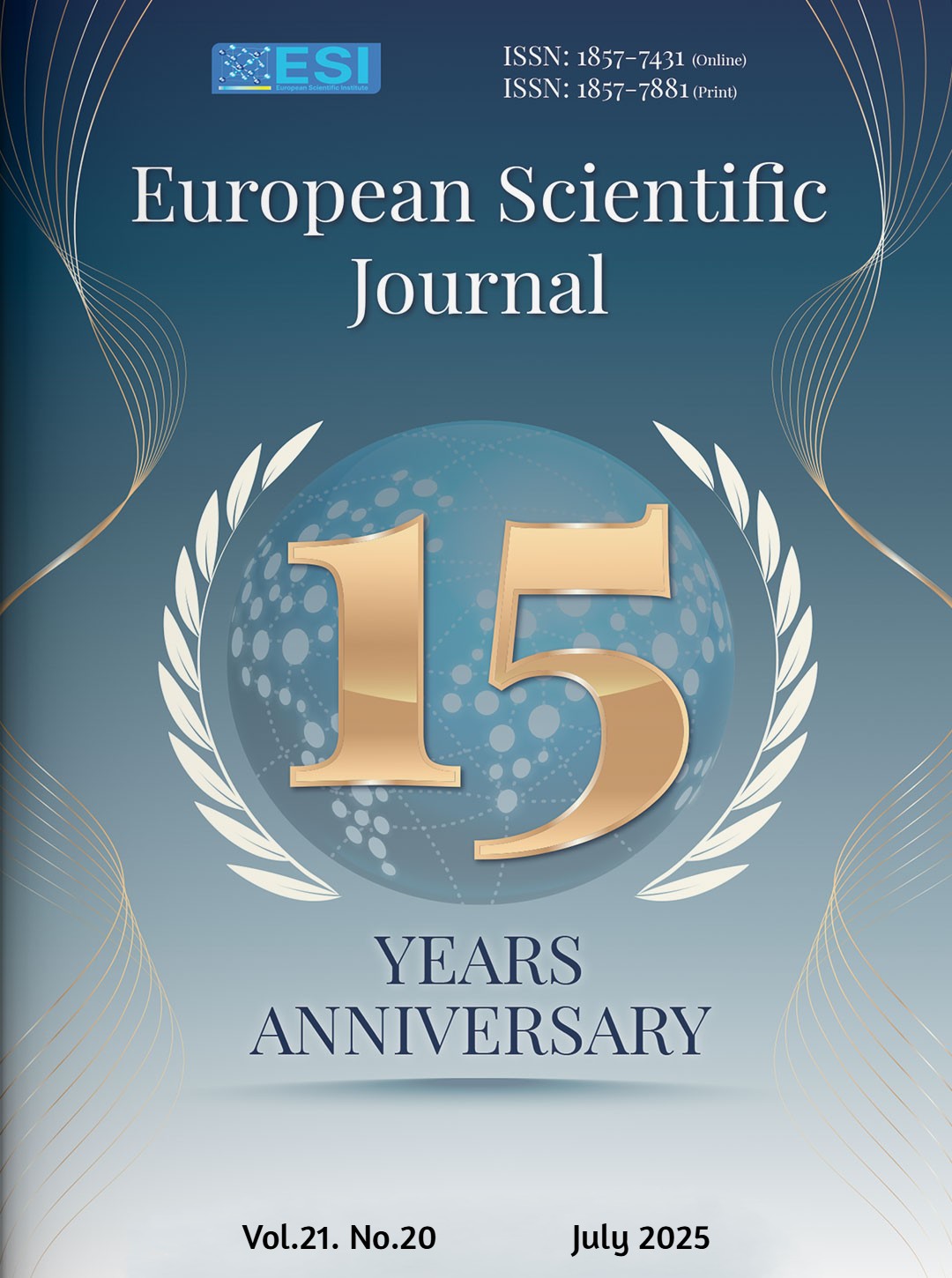Globalization and Migrant Rights in Post-Pandemic Italy: Navigating Economic Dependency and Policy Exclusion
Abstract
The study examines the impact of globalization on migration governance and migrant rights in post-pandemic Italy, emphasizing the contrasts between the country’s economic reliance on migrant labour and the enforced, more restrictive policies. The research employs a qualitative, desk-based approach to analyse how migration flows have changed due to globalization, the primary human rights problems faced by immigrants, the effects of Italian and EU migration policies, and the socio-economic barriers to integration. The study examines the impact of border securitization, labour market conditions and the COVID-19 pandemic on migrant experiences, with a focus on the increasing importance of civil society and grassroots activism in advocating for migrant rights. By analysing academic literature, policy documents and institutional reports, this research aims to provide a critical understanding of the challenges facing migrants in Italy and how current policies influence their access to legal protections, employment and long-term social stability.
Downloads
Metrics
PlumX Statistics
References
2. Avineri, S. & De-Shalit, A. (eds.) (1992). Communitarianism and Individualism. Oxford University Press.
3. Bauman, Z. (1998). Globalization: The Human Consequences. Columbia University Press.
4. BBC (2024).Europe migrant crisis: Albanian court greenlights migration deal with Italy.Available at:https://www.bbc.com/news/world-europe-68132537
5. Biorcio, R., Caruso, L., & Vitale, T. (2016). Le trasformazioni del sistema politico italiano e l’associazionismo. In R. Biorcio & V. Vitale (eds.), Italia Civile. Associazionismo, partecipazione e politica da Tangentopoli a oggi. Roma: Donzelli editore.
6. Bonifazi, C., &Paparusso, A. (2019). Remain or return home: The migration intentions of first‐generation migrants in Italy. Population, Space and Place, 25(2), e2174.
7. Bonizzoni, P., & Hajer, M. (2023). Politicising the Amnesty: Struggles for Migrants’ Legality during a Pandemic. Partecipazione e Conflitto, 16(1), 119-137. https://doi.org/10.1285/i20356609v16i1p119
8. Caneva, E. (2014).The integration of migrants in Italy : an overview of policy instruments and actors. Migration Policy Centre, INTERACT Research Report, Country Reports, 2014/05 - https://hdl.handle.net/1814/32019
9. Castles, S., de Haas, H., & Miller, M. J. (2014). The Age of Migration: International Population Movements in the Modern World (5th ed.). Palgrave Macmillan.
10. Colombini, J. (2023). Transnational Lampedusa: Representing migration in Italy and beyond. Springer Nature.
11. Caritas Europe. (2021). Demystifying the regularisation of undocumented migrants, available online at: https://www.caritas.eu/wp-content/uploads/2023/07/210326-Regularisation-of[1]undocumented-migrants_policy-paper.pdf
12. Castles, S. (2020). The age of migration: International population movements in the modern world. Palgrave Macmillan.
13. Crawley, H. (2021). The Politics of Refugee Protection in a (Post)COVID-19 World. Social Sciences, 10(3), 81. https://doi.org/10.3390/socsci10030081
14. Daminelli, L. (2022). Aspettare a Ventimiglia. La frontiera italo-francese fra militarizzazione, crisi dell’accoglienza e solidarietà. REMHU: Revista Interdisciplinar da Mobilidade Humana. 30, 59-80. 10.1590/1980-85852503880006405.
15. della Porta, D. e Steinhilper, E. (2021). Introduction: Solidarities in Motion: Hybridity and Change in Migrant Support Practices. Critical Sociology, 47(2), 175-185. DOI: https://doi.org/10.1177/0896920520952143.
16. Dokos, T. (2017). Migration and Globalization – Forms, Patterns and Effects. Background Paper Trilogue Salzburg 2017.
17. European Migration Network (2024). Annual Report on Migration and Asylum 2023. Available at: https://home-affairs.ec.europa.eu/document/download/84da11ab-a2b4-48f8-9279-05249b742335_en?filename=EMN_ARM2023_final_110724_0.pdf.
18. Fabini, G.,&FirouziTabar, O. (2023). Governing Immobility in the COVID-19 Crisis in Italy: Non-conforming Behaviors of Migrants Confronting the New Old Processes of Othering. Crit Crim 31, 307–325 (2023). https://doi.org/10.1007/s10612-023-09701-z
19. Fontana, I. (2022).The human (in)security trap: how European border(ing) practices condemn migrants to vulnerability. Int Polit, vol. 59.
20. Gattinara, P. C. (2016). The politics of migration in Italy: Perspectives on local debates and party competition. Routledge.
21. Glick Schiller, N., & Salazar, N. B. (2013). Regimes of mobility across the globe. Journal of Ethnic and Migration Studies, 39(2), 183–200. https://doi.org/10.1080/1369183X.2013.723253.
22. Held, D., & McGrew, A. (2007). Globalization Theory: Approaches and Controversies. Polity Press.
23. IDOS (2022). Dossier statistico Immigrazione. Available at : https://www.dossierimmigrazione.it/prodotto/dossier-statistico-immigrazione-2022/
24. Isakjee, A., Davies, T., Obradović‐Wochnik, J., & Augustová, K., Liberal Violence and the Racial Borders of the European Union.Antipode, 52, 2020.
25. ISTAT, (2019). Cittadini non comunitari: presenza, nuovi ingressi e acquisizioni di cittadinanza. Anno 2018, Statistiche Report Novembre 2019 [online] Available at: www.istat.it.
26. More in Common Report (2018).Attitudes towards National Identity, Immigration and Refugees in Italy. Available at: www.moreincommon.com
27. Moro, G. (2010). L’attivismo civico e le pratiche di cittadinanza. Convegno SISP – Venezia, 16-18 settembre 2010.
28. Nicolosi D., (2024). Il ruolo dei confini nell’Unione Europea. L’attivismo prosociale della rete Stop Border Violence.Futuri, 21, Anno XI / Giugno 2024, 129-141.
29. OECD (2021), Key facts and figures (infographic), in International Migration Outlook 2021, OECD Publishing, Paris. Available at : https://www.oecd.org/content/dam/oecd/en/publications/reports/2021/10/international-migration-outlook-2021_ea4f9277/29f23e9d-en.pdf
30. OECD (2023). Harmful Tax Practices – 2023 Peer Review Reports on the Exchange of Information on Tax Rulings. Available at:https://www.oecd-ilibrary.org/docserver/3e2ffd79-en.pdf?expires=1733732649&id=id&accname=guest&checksum=35B11AFC943A04343DE9EA69C64B1E18
31. Parati, G. (2005). Migration Italy: The art of talking back in a destination culture. University of Toronto Press.
32. Perolini, M. (2024). Limited Tools for Emancipation? Human Rights and Border Abolition. Sociology, 58(2), 386-402. https://doi.org/10.1177/00380385231173897
33. Sassen, S. (2014). Expulsions: Brutality and Complexity in the Global Economy. Harvard University Press.
34. Save the Children (2020). COVID-19: Operational Guidance for Migrant & Displaced Children, version 1, April 2020. Available at: https://bettercarenetwork.org/sites/default/files/2020-04/ OperationalGuidanceCovid19andMigrationandDisplacement. pdf, accessed 23 April 2020.
35. Schwiertz, H., & E. Steinhilper, Countering the Asylum Paradox Through Strategic Humanitarianism: Evidence from Safe Passage Activism in Germany. Critical Sociology, 47 (2020), 1-15.
36. Tsapenko, I. P., & Sautkina, V. A. (2018). Global migrations and health economics. Terra Economicus, 16(1), 84-100.
37. Tshibambe, G. N. (2020). Perspectives on Contemporary Migration and Regional Integration in Central Africa. Borders, Mobility, Regional Integration and Development: Issues, Dynamics and Perspectives in West, Eastern and Southern Africa, 39-49.
38. WHO (World Health Organization) (2020). ApartTogether survey: Preliminary overview of refugees and migrants’ self-reported impact of COVID-19. WHO. Available at:https://iris.who.int/bitstream/handle/10665/337931/9789240017924
Copyright (c) 2025 Davide Nicolosi, Lindita Licaj, Iresha M. Lakshman

This work is licensed under a Creative Commons Attribution 4.0 International License.








